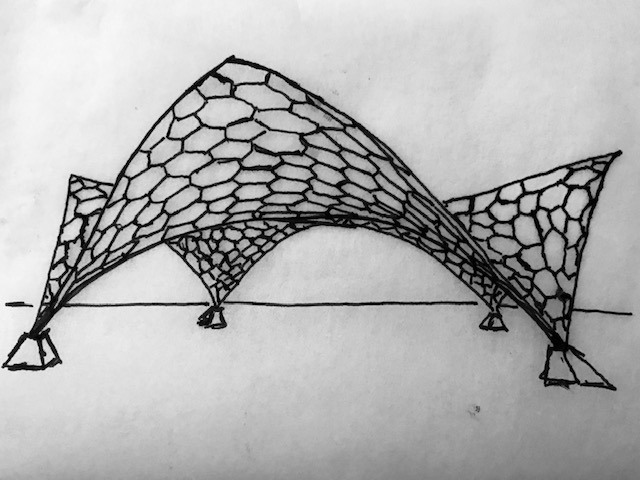Voronoi Structures in Nature to Architecture
 |
| Voronoi shell structure |
Voronoi structures happen in nature in all different forms and they are making an appearance in architecture with new programming tools and the ability to fabricate infinitely unique designs with computerized numerical controlled machines (CNC).
Voronoi structures, also known as Voronoi diagrams or tessellations, are geometric patterns that have a wide range of applications in various fields, including computer science, physics, and biology. In nature, Voronoi structures can be observed in diverse contexts, highlighting the efficiency and optimization principles underlying natural processes. Here are a few examples of Voronoi structures in nature:
Plant Leaf Arrangements: Voronoi patterns can be observed in the arrangement of leaves, seeds, or flowers on plants. Each leaf or seed occupies a specific area of the plant, and these areas are typically arranged in a way that optimizes access to resources like sunlight and nutrients. Voronoi structures help plants maximize their exposure to these resources, leading to efficient growth and development.
Animal Fur Patterns: The fur patterns of certain animals, such as giraffes, cows, and jaguars, exhibit Voronoi-like structures. These patterns are believed to provide camouflage, helping animals blend into their natural habitats and avoid predators.
Bubble Formation: When multiple soap bubbles merge, the borders between them form a Voronoi pattern. This occurs because the bubbles seek to minimize their surface area while enclosing a given volume of air. The resulting Voronoi structure is a natural consequence of this optimization process.
Honeycomb Formation: Honeybees construct their hives in a hexagonal pattern, which is a type of Voronoi structure. This hexagonal pattern allows bees to use space efficiently while storing honey, pollen, and larvae. Hexagons are the most efficient shape for filling space without any gaps.
Cellular Patterns: Voronoi diagrams can represent the spatial distribution of biological cells in tissues. Cells tend to arrange themselves in a way that maximizes their access to nutrients and minimizes competition with neighboring cells. Voronoi structures can help model these arrangements in biological systems.
Geological Patterns: Voronoi patterns can be observed in natural geological formations, such as mineral deposits and cracks in rocks. These patterns can provide insights into the processes that shaped the Earth's crust over millions of years.
In summary, Voronoi structures in nature showcase the remarkable ability of living organisms and natural processes to optimize their spatial arrangements. These structures demonstrate the efficiency and adaptability of natural systems, leading to the formation of intricate and mathematically elegant patterns observed in various biological, physical, and geological phenomena.
Related Articles:



Comments
Post a Comment